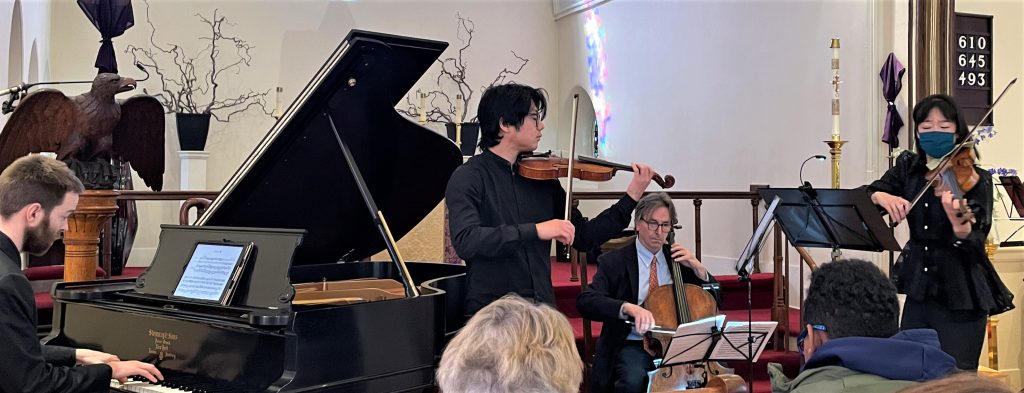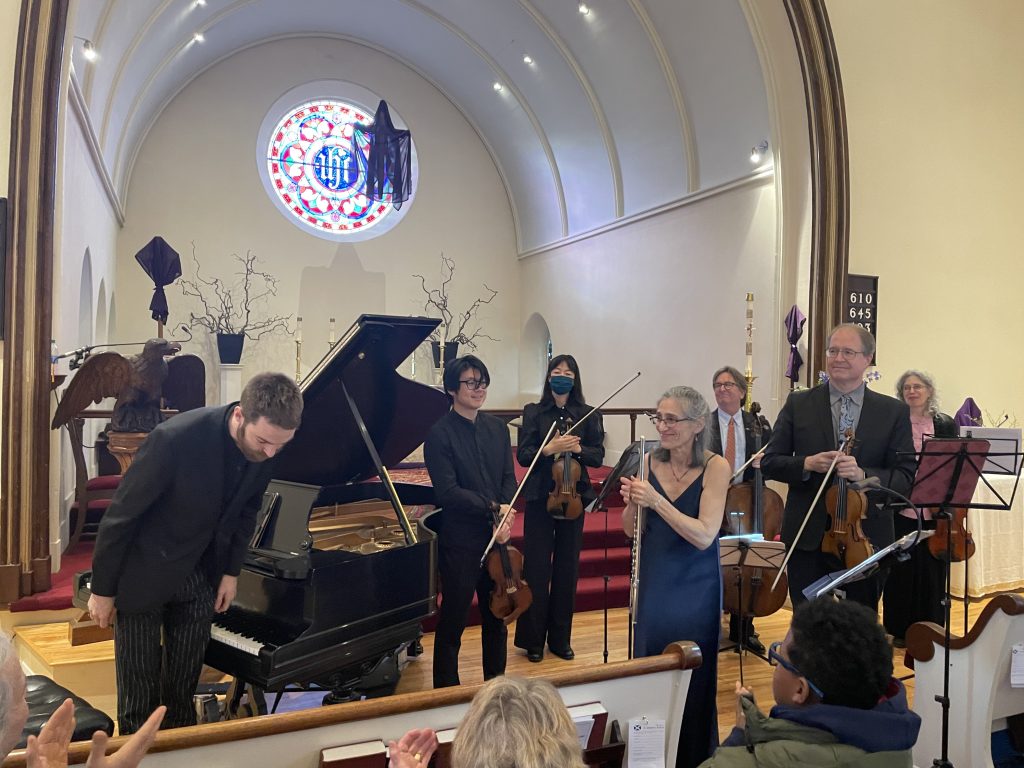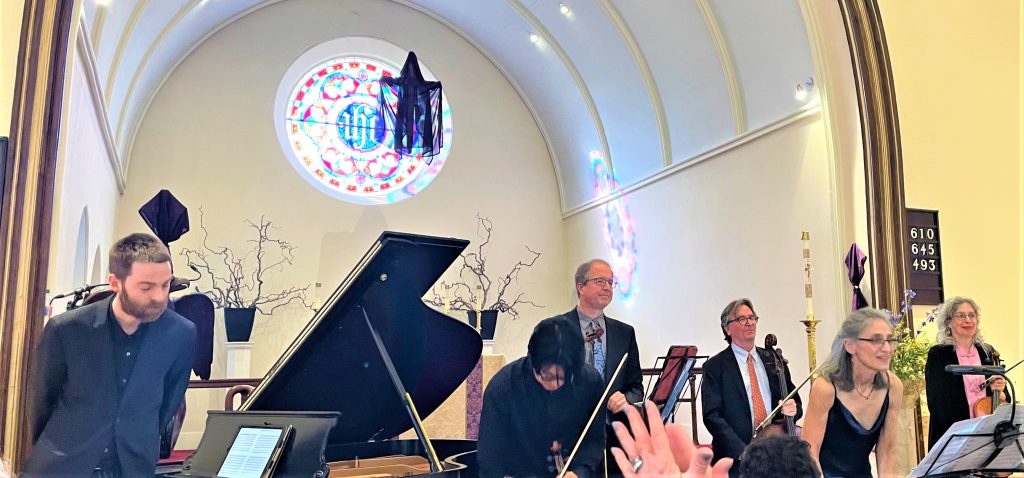
by Kevin T McEneaney
Last Sunday afternoon at St. Andrews Episcopal Church in Kent, The Sherman Ensemble performed its annual Best of Baroque concert. This time strings were augmented: the septet sounded like a small orchestra. The program opened with a Trio Sonata in B-flat major, Op. 2, No. 3, HWV 338 (1722, the year Handel was appointed “Composer of Musik for His Majesty’s Chapel Royal, due to the impressive achievement of is famous Water Music).
Handel twice reused the opening Andante of this work: once for his opera re di Germania due to the majestic quality of the opening movement, and subsequently a slightly revised version in Opus 3, No. 6 Concerto Grosso (where he added two oboes). Here an added violin played with contagious enthusiasm by Doori Na amplified its majestic quality. While Handel obviously thought highly of this opening movement, I preferred the lighter and more sonorous Allegro in D major that followed, perhaps because of the master flute performance of Susan Rotholz. The Larghetto was lively and tight, featuring wonderful melody; here Sarah Adams excelled on viola. In the concluding Allegro, Eliot Bailen subtlety grounded and guided the piece to its satisfactory and emphatic conclusion.

In Concerto Grosso Op. 6, No. 3 in C Minor by Archangelo Corelli, a format that permits string soloists to shine as they pass the melody to a different string player for their own ornamentation expertise (or comment on the theme at hand). This format permits players to joke or attempt to overgo the previous player, which creates entertaining personal space that lets a performer to add the personality of their instrument, as if they were playing the children’s game of hot potato; here violinist Michael Roth dominated and delighted with comments both fierce and amusing. Small-scale fugal phrasing alluding to dance measures make this work one of the most charming works in the repertoire of Corelli.

Antonio Vivaldi’s Flute Concerto No. 2 in G Minor, RV439, nicknamed “La Notte” (The Night) remains a fabulous flute piece that few flautists can perform. I recall the great Jean-Pierre Rampal playing this work at Carnegie Hall back in 1972; once again I was thunder-struck by virtuosity—this time by Susan Rotholz on flute who transported me to another world with her immaculate phrasing and impressive breathing techniques that appeared effortless. Jane Chung on violin joined the ensemble to swell this enchanting program piece of atmospheric sounds. The first mellow movement appears to describe dusk transitioning to darkness. The Presto Fantasmi provides an anthology of night noise from swishing trees, unidentified animal scampering sounds, noises that children might identify as ghosts. The following calm and poetic Presto describes the serenity of a starlight sky with rising full moon. Largo, labeled Il Sonno (Those Dreams), invites the fiction of nighttime hunting amid windy weather. The concluding Allegro delivers a comedy of pre-dawn blue light where insects and birds begin their daily activities. This remains o e of the great early program pieces to delight an audience if an ensemble has a magic flute player to make it work, and in this case assisted by a superior keyboard player renowned by his renditions of J. S. Bach—I refer to Evan Shinners glistening the keyboard with subtle melodic flare that contributed marvelously to poetic ambiance.

The climactic finale was reserved for Bach, Triple Concerto in AS Minor for flute, violin and keyboard, BVW 1044, a revision of an earlier work in his final years, “showing what he could do when he wanted to” (Martin Beck in Bach: Life and Work). Bach was fascinated by what Corelli, Albinoni, and Vivaldi had achieved, and he managed to bring the Baroque era to its climax, a climax that has influenced and awed all subsequent musicians. Even Paul McCarthy of the Beatles admitted that he listened to Bach more than any other musician “because he had done all the math.” With Evan Shinners leading on keyboard, all seven musicians were exploding in unity to some mythical Atlantis where music was the universal language of our ancestral hominids—the region of our brain where music is located long precedes the creation of language in our brain….